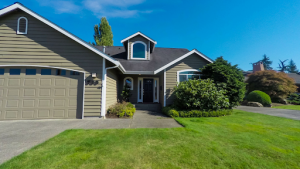What Denver Real Estate Agents Should Know About the Plus 55 Market


In the 1990s, Denver County was experiencing the reverse of a fast-growing national trend: the percentage of the Denver population over the age of 65 was shrinking. As more and more young people flocked to Denver, and as more seniors moved away, the percentage of seniors declined sharply in Denver, even as it increased in the surrounding areas.
However, that changed at the turn of of the millennium. Now, the population trend in Denver mirrors the nation as a whole, and the Denver senior population is growing faster than ever before as Baby Boomers reach retirement.
According to the Denver Regional Council of Governments website, “In 1990, on average, 10.4 percent of the region’s population was age 60 or older. By 2014, that share increased to 18.9 percent, and by 2040 more than 24 percent of the total population will be age 60 or older.” Nationally, by 2020, a full 35% of the population is projected to be above the age of 50.
As a result, seniors and retirement-age Denver residents are having a major impact on the local housing market.
While this demographic is still independent and mobile, they also have an eye towards the future. This means that real estate agents need to know more than the fact that 90% of homeowners want either hardwood or tile in the kitchen. Increasingly, retirement-age homebuyers are looking for homes where they can “age in place.”
Aging in place is just one example of the ways older Americans are affecting the housing market. And as the Baby Boomer generation continues to age, more Realtors, real estate agents, and home builders are preparing for these changes.
In order to better prepare you for clients age 55 and older, here are some important considerations to keep in mind when identifying potential homes for retirement-ready residents of the Denver region.
Downsizing
Now that their children are grown and living on their own, many people 55 and over are looking to downsize. Smaller homes aren’t just less expensive upfront; they also cost less to maintain and are easier to clean, which means less work for seniors. Because of that, smaller homes are often prized by senior homebuyers.
No Stairs
While there is generally some flexibility here, with around a third of homes coming with a porch and patio, both of which typically have at least one step, most seniors are looking for a one story home. This is both a matter of convenience and safety, as stairs can prose a serious risk to seniors as they continue to age.
Walkable community
One of the biggest selling points for many seniors is that they live in a walkable community. This allows seniors to cut back on their daily driving time and get some healthy exercise while doing their daily errands. It also provides a greater sense of community, which is important, as most people retire around age 63. That means that they will have more time to spend at home and in their neighborhoods.
Senior friendly bathrooms
As people age, they lose their range of motion. Specifically, knee pain can restrict seniors’ abilities to step in and out of the shower. Knee pain is the second most common type of chronic pain and knee osteoarthriis is the leading cause of disability in the elderly, affecting one in five. As a result, many seniors prefer showers that have doors or low barriers.
According to Brian Jensen of New Life Bath & Kitchen, “Bathtubs are going out of style. While people typically want one tub in their home for children and grandchildren – most of our bathroom remodeling customers are now opting for zero-threshold or no threshold showers.”
Understanding the needs of your customers is vitally important in any industry, but for real estate professionals it is even more important. As more seniors hope to age in place, many Baby Boomers are looking for the home where they will spend the rest of their lives.






